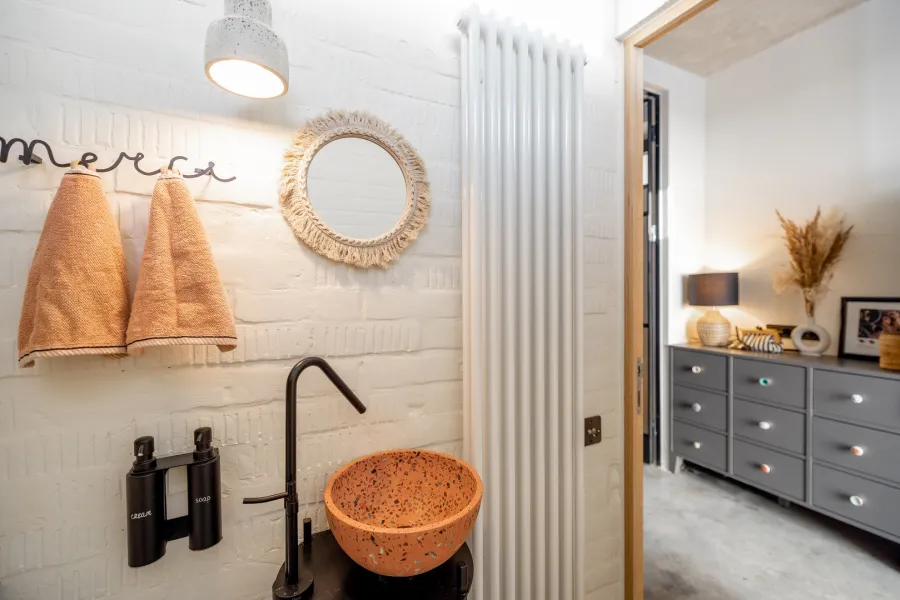
Blog
Effective ways to get rid of unpleasant odors in your home bathroom

A home bathroom requires daily care to eliminate unpleasant odors in order to use it safely. The following lines explain a set of steps that eliminate unpleasant odors in the bathroom, in addition to making it clean and free of any dirt or mold. Note that the methods of removing bad odor from the bathroom vary between using an air freshener, gel deodorizer, candles, charcoal, and a range of natural cleaners.
جدول المحتويات
Good ventilation

Good ventilation
All bathrooms require good ventilation, as the flow of fresh air throughout each space makes a big difference and prevents any unpleasant odor. This is why it’s a good idea to install a fan and keep the door and window open when the bathroom is not in use.
Clean and dry towels
Causes of bad bathroom odor include dirty or damp towels. When towels are not dry, they emit an unpleasant odor due to fast-growing bacteria and fungi. Add to that, the growth process is accelerated if bacteria and fungi are festering on towels, which have not been washed, for a while. So, hang your towels to dry in a place with good airflow, and wash them at least once a week. This includes hand towels and face towels. Bleach or hot water should be used as often as possible to kill any germs on the towels.
Candles
The heat and smoke from decorative candles can help neutralize unpleasant bathroom odors. Unscented candles work just as well as scented candles. However, never leave any candles unattended and extinguish them before leaving the space.
Cleaning regularly
Sometimes, unpleasant odors mean your bathroom needs to be cleaned. Dirt accumulated in the bathtub or shower, stains in the toilet bowl, and a dirty sink can cause unpleasant odors.
Therefore, you should clean the bathroom at least once a week, with a more thorough cleaning every month or two, which will help reduce unpleasant odors. In addition to cleaning the toilet, toilet seat, sink, floor, and shower area, do not forget to take care of the bathroom carpets, door handle, faucet handles, and toothbrush, all of which harbor bacteria and germs, as these items quickly accumulate particles and liquids that escape from the siphon water, especially if the seat cover remains raised. It’s also a good idea to replace new bathroom rugs with old ones, if the latter become smelly. Don’t forget to clean the floor at the back of the toilet.
It’s also a good idea to look for hidden sources of mold and mildew, such as: The bottom edge or folds of a shower curtain, the liner, the inside of a toothbrush holder, or a clogged drain.
Take out the garbage
Your trash can can smell, too, which is why it needs to be emptied regularly, not just when it’s full.
Natural detergents
Commercial cleaners leave heavy chemical residues in the air; you can neutralize them if you use natural cleaners instead, such as baking soda, vinegar, and lemon juice: Baking soda, vinegar, and lemon juice. So, after cleaning the bathroom, an open bowl filled with baking soda (or distilled white vinegar or lemon juice) can be left in the bathroom to help absorb odors.
Coal
Charcoal, made from bamboo, is an eco-friendly product that absorbs odors, harmful chemicals, and has the added benefit of removing moisture from the air, reducing mold and mildew. Look for deodorizers and other products that contain this beneficial ingredient, and put them in your bathroom for a fresh scent.
Mold and fungus removal
Some powerful cleaners claim to remove mold and mildew from bathroom surfaces, but they also leave behind strong odors that can lead to other issues! So, you can get rid of mold naturally by spraying vinegar on the affected areas, wait for an hour, rinse with hot water, and dry with a towel.
